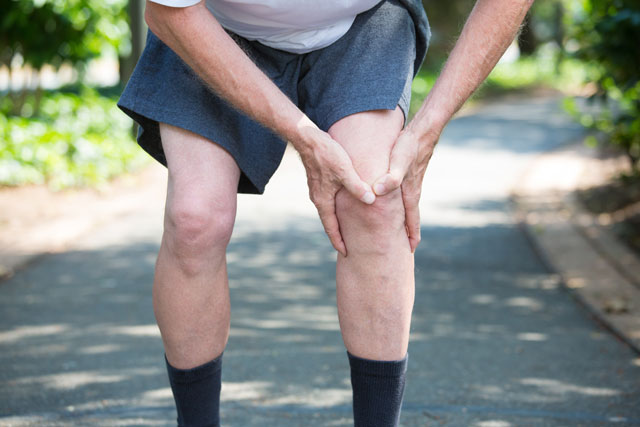Are antibodies in the joints to blame for rheumatoid arthritic pain? Animal study helps researchers understand antibody-mediated pain
02/25/2020 / By Darnel Fernandez

Rheumatoid arthritis is an autoimmune disease that causes inflammation and pain by attacking the synovial tissues within the joints. This often affects the joints of the hands, wrists, feet, knees, elbows and ankles. The American College of Rheumatology estimates that rheumatoid arthritis affects about 1.3 million Americans, with 75 percent of these patients being women. What’s interesting to note is that the joint pain often associated with rheumatoid arthritis is often observed even in the absence of arthritis itself. This suggests an unidentified pain mechanism behind the phenomenon. Now, recent research has finally discovered the culprit behind this unexplained pain.
A study published in the Journal of Experimental Medicine identified certain antibodies that exist in the joints prior to the development of rheumatoid arthritis that are responsible for the unexplained joint pain observed independent of disease activity. The findings could present a general mechanism in autoimmunity and could pave the way for new ways of reducing non-inflammatory pain caused by rheumatoid arthritis and other autoimmune diseases.
“We all know that inflammation is painful,” said corresponding author Camilla Svensson. “But pain can appear before any sign of inflammation in the joints and can remain a problem after it has healed. Our aim was to find possible mechanisms to explain that.”
An unexpected cause of pain
Joint pain is a common early symptom of rheumatoid arthritis. However, even before the onset of this joint pain, the body starts producing immune antibodies to attack proteins in the joints. Researchers from the Karolinska Institutet in Sweden looked into how these antibodies cause pain. To do so, the researchers injected cartilage-binding antibodies into mice, which served as a model for human rheumatoid arthritis.
After analyzing the effects, the researchers observed that the mice exhibited higher sensitivity to pain even before they could see observable signs of inflammation in the joints. Also, they noticed that antibodies designed to not activate immune cells and trigger inflammation were also found to induce pain-like behavior in the injected mice, also suggesting increased pain sensitivity in the joints. (Related: Rheumatoid arthritis linked to vitamin D deficiency, researchers find.)
Furthermore, the antibodies injected into the mice formed clusters called immune complexes, which consisted of antibodies and proteins in the joints. These complexes triggered pain cells through Fc-gamma receptors present in pain neurons within the tissue. The researchers then cultivated these pain neurons from the mice and found that pain cells activate when they come into contact with these immune complexes. The antibodies within the complex can thus act as pain-generating molecules themselves, completely independent of the activity of the immune cells.
“Antibodies in these immune complexes can activate the pain neurons directly, and not, as previously thought, as a result of the destructive joint inflammation,” said Svensson. “The antibodies can affect the pain neurons also in conditions without any distinct tissue damage or inflammation.”
While the study was conducted entirely in mice, the researchers showed that human pain neurons also contained antibody receptors holding the same function as those found on mouse pain receptors. This suggests that their findings could also be relevant to humans. In addition, due to joint and muscle pain being common symptoms of other autoimmune diseases, the researchers believe that their findings could also explain the non-inflammatory pain caused by those diseases as well.
The researchers hope that their findings could lay the groundwork for the discovery of a new way of reducing pain caused by rheumatoid arthritis and other autoimmune diseases.
Learn more about rheumatoid arthritis and other autoimmune diseases by browsing the stories found at Health.news.
Sources include:
Submit a correction >>
Tagged Under:
antibodies, autoimmune diseases, Fc-gamma receptors, inflammation, joint and muscle pain, pain sensitivity, possible treatments, research, rheumatoid arthritis
This article may contain statements that reflect the opinion of the author
RECENT NEWS & ARTICLES
COPYRIGHT © 2017 REAL SCIENCE NEWS





















